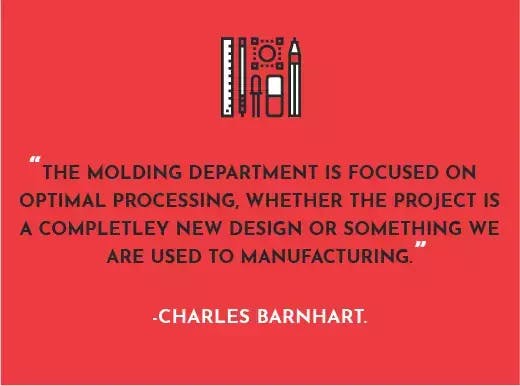First off, we hear you’re retiring soon. How long have you worked at Designetics?
15 years!
How did you get your start?
I was brought in hired as a consultant and then hired full time.
How has research and development changed over the years?
R&D at Designetics has grown from simply discovering how basic products are actually manufactured to finding new ways to implement all aspects of application. For example, we’ve created projects to improve the application of chemicals in flow design and actually quantifying the flow rates through applicators. We’ve also focused on projects to improve assembly times and quality of our applicators. We’re also looking toward the future…looking more into our manufacturing process to reduce the assembly with injection molding to reduce overhead costs in the manufacturing of applicators.
When working on new products, what is your step-by-step process?
First, we look at possible existing products that can be quickly modified, if this is not possible, we create a new product with our current equipment. Sometimes a new design requires completely new equipment for manufacturing. Of course, other personnel at the company are consulted to make sure we are headed in the right direction with new equipment design.
Has 3D printing changed how you approach work?
3D printing has made it possible to check potential designs before having any machine shop manufactured part, as well as identifying potential problems prior to spending time and money.
What other technological advancements have shaped work processes since you first started working at Designetics?
Measuring equipment has improved tenfold. I also think robotics will be used more in the future to aid in various processes.
Talk through how the molding department approaches new projects.
There’s a focus on efficiency and high quality. When the department receives projects requiring new molds, they set up the machines efficiently, ensuring quality and timely completion. The molding department is focused on optimal processing, whether the project is a completely new design or something we are used to manufacturing.
How do you go about testing chemicals that are used in client application?
As it is important to test untainted chemicals, we obtain them through clients or purchase them through a distributor. The Safety Data Sheet is reviewed to understand all safety concerns and considerations of material handling and, if possible, the Technical Data sheet is obtained to understand how to mix the chemical and the proper thickness of application. The chemical is tested to ensure the viscosity of the fluid. Then, applicators are chosen depending on the viscosity, and testing is performed with applicators for proper lay down on substrates. We conduct testing to check for chemical dripping when the applicator is in a docking station. If the chemical is being applied by robotics, then further testing is completed.
Now that you’re nearing retirement, what were some highlights of your career?
Seeing the company progress in all areas, including facility expansion, robot application and future designs for fluid application have all been highlights.
